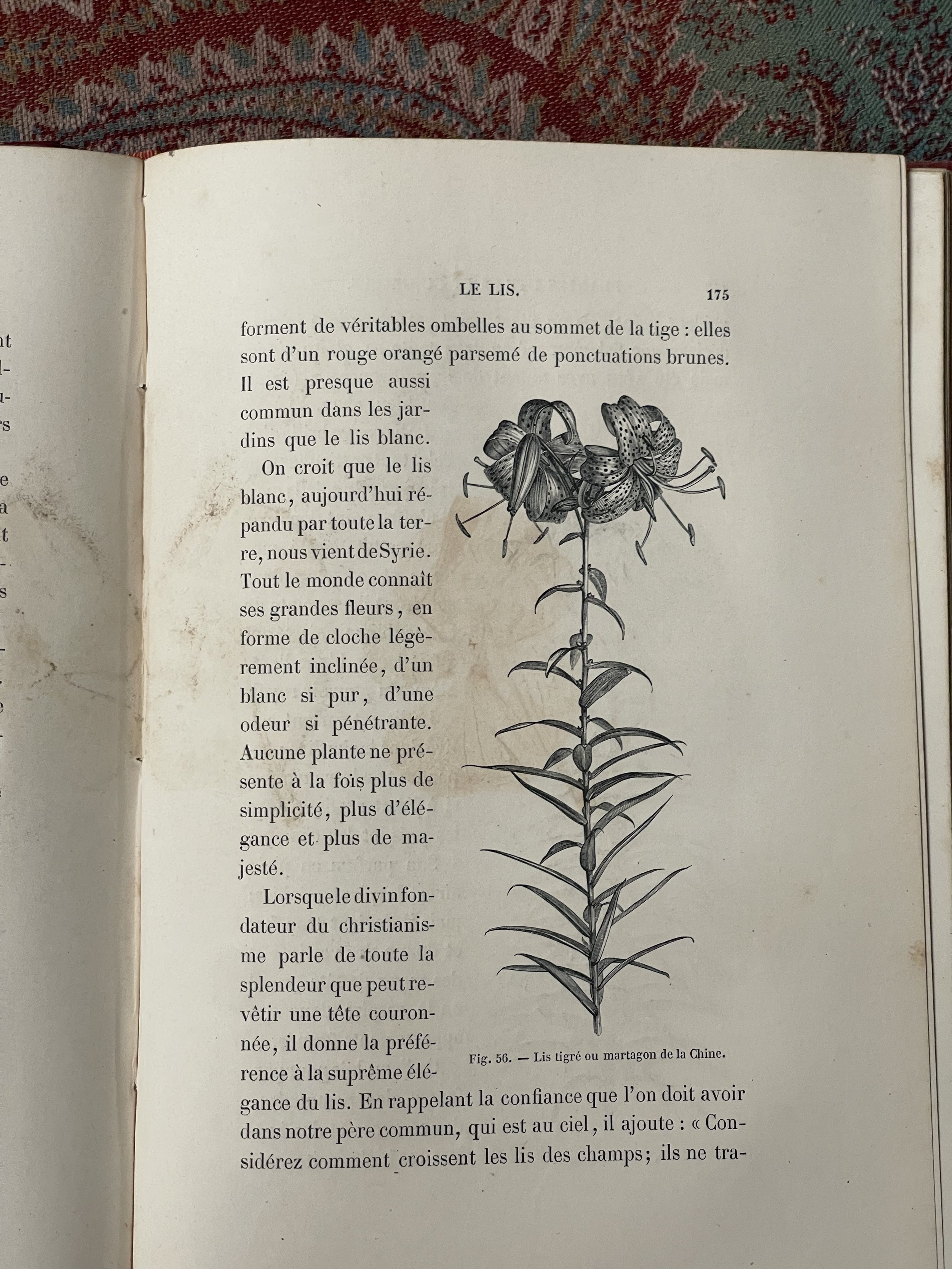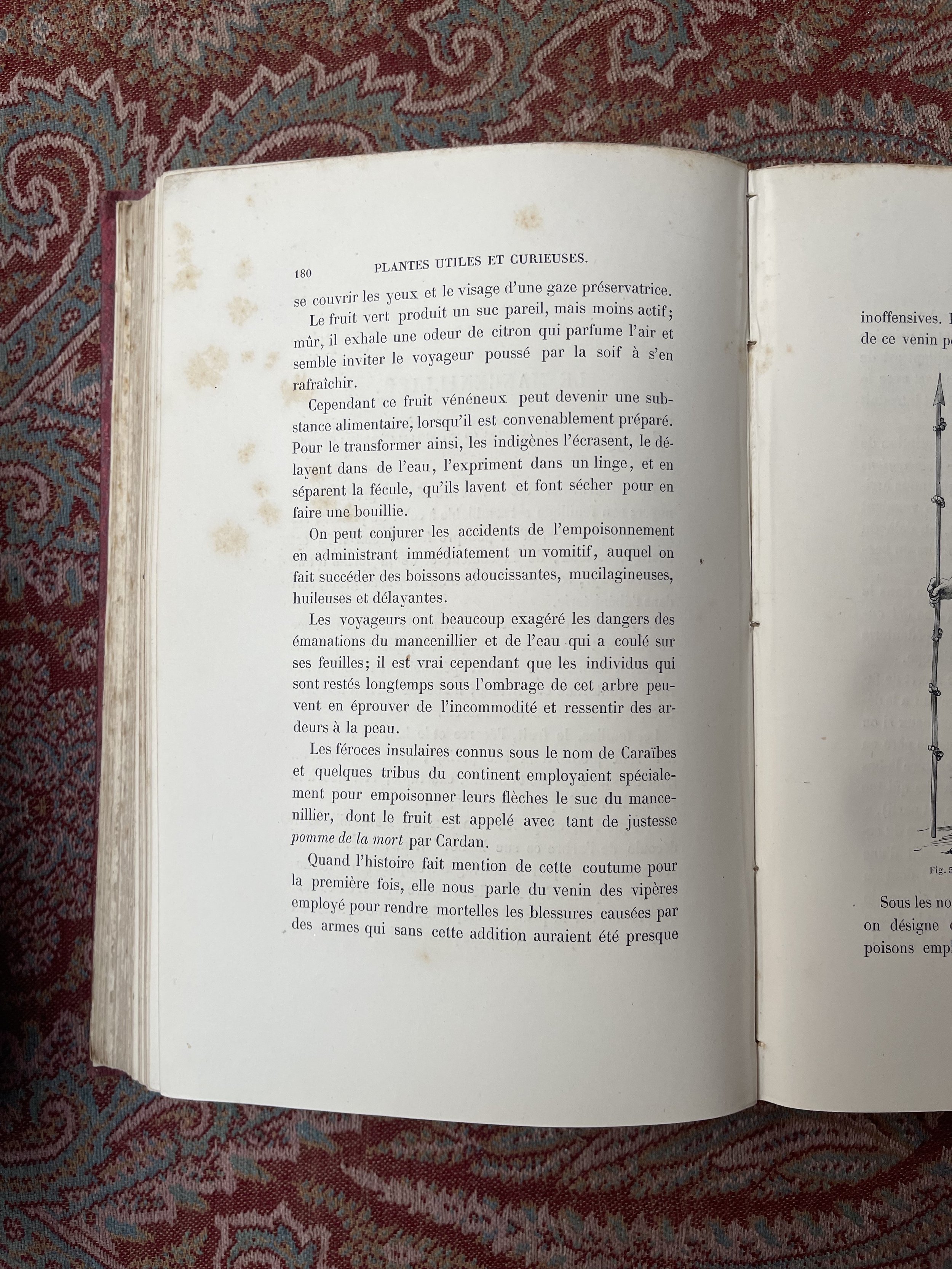Paper Through the Centuries
Philippa Hechl
Paper has been a portal for people to share prose, poetry, and art for centuries. While the subjects and works illustrated on these sheets are often most admired, the paper itself can be equally as important and astounding. The Oak Spring Garden Library has a wide collection of rare books and manuscripts that are bound from historical and unique paper, covering varying time periods.
Paper can be made from an abundance of natural materials and fibers, as some of the staff and residents of Oak Spring learned from Alyssa Sacora, a fiber artist who hosted a paper making demonstration on June 30th. The lesson not only correlated to the garden, agriculture, and nature aspects of the foundation, but also the relationship to the wonderful rare books in the Oak Spring Garden Library collection.
Our Biocultural Conservation Farm (BCCF) team worked with Alyssa to harvest materials grown in the fiber bed of their walled garden. She taught the process of using a grated frame to pick up a thin sheet layer of pulp, which was blended from materials such as Siberian iris, barley, and cotton, and then carefully press them onto a pad. Once a few layers of sheets and pads are stacked, they are ready to dry. Alyssa showed 3 easy options for drying: hanging on a clothing line, pressed to a window, or placed in a dry box. The varying drying methods will determine how the texture of the paper will turn out.
While a lot of this process is timely, there are also aspects that would require much more time without modern technology. Many of the books and manuscripts within the library were created before fans, mechanical blenders, and dehumidifiers, all tools that Alyssa used to aid the process. Scroll down to read about several types of historical paper - and the illustrations and text on them! - in the collection.
Buch der Natur by Konrad von Megenberg (1350)
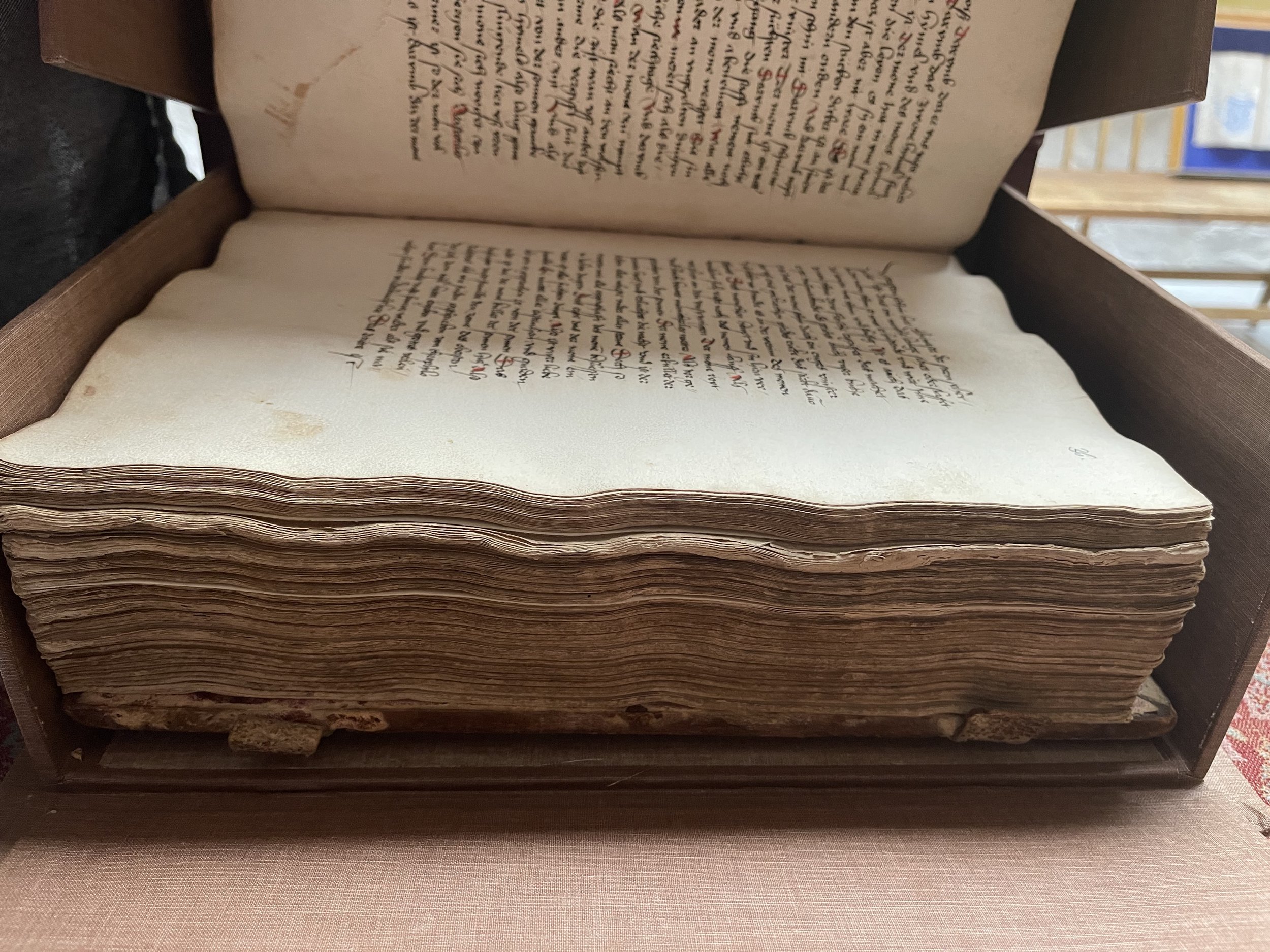
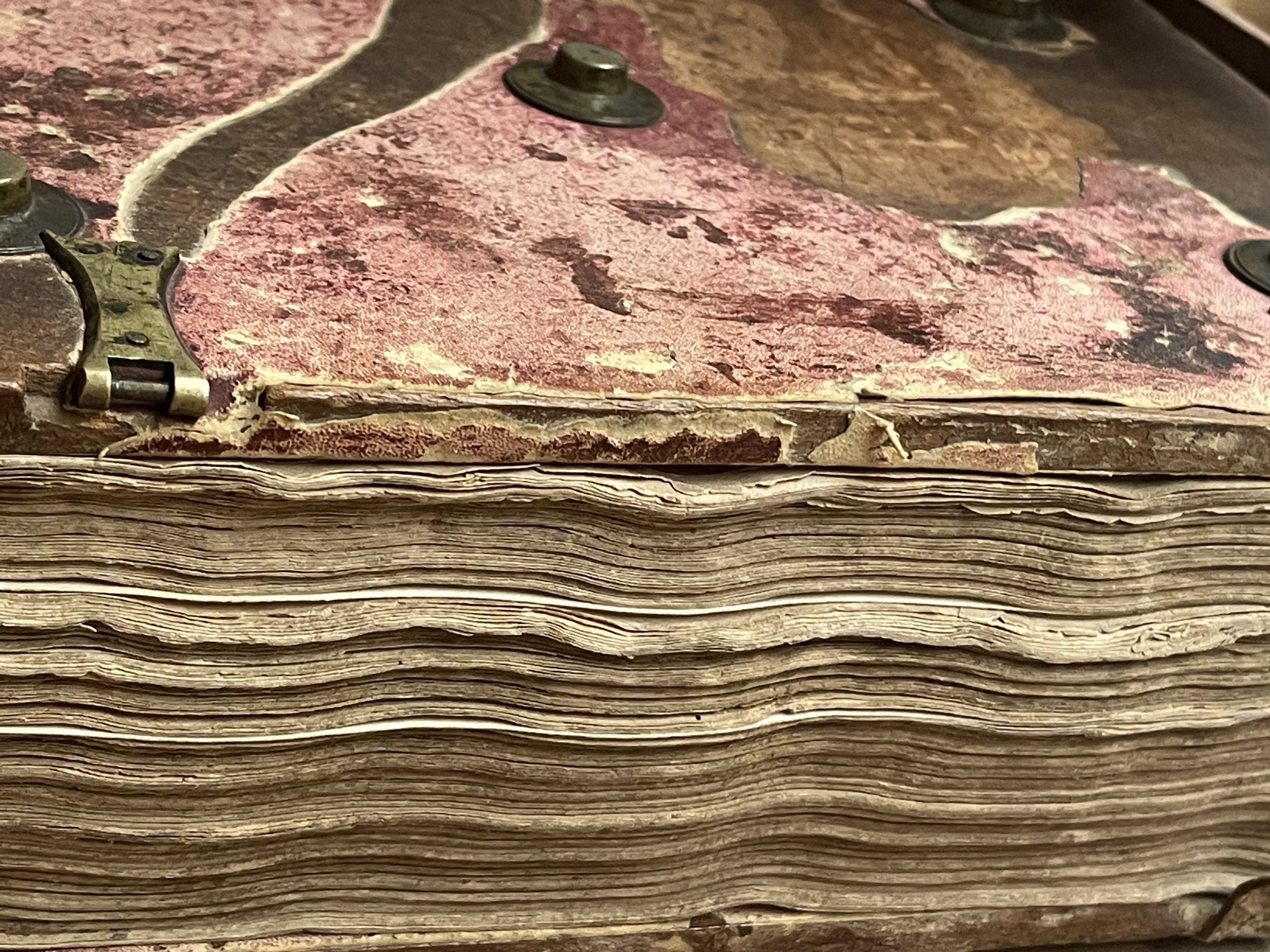
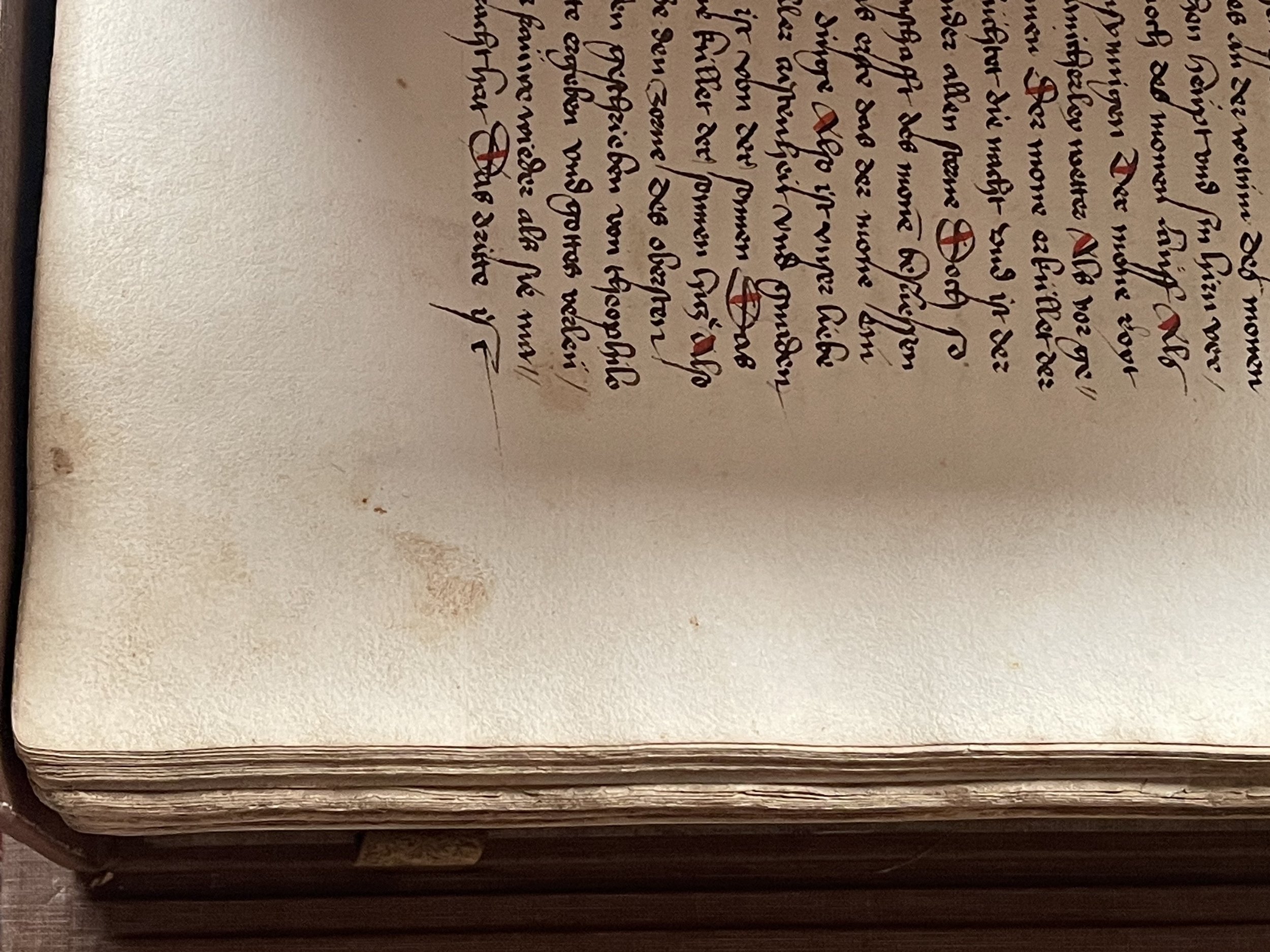
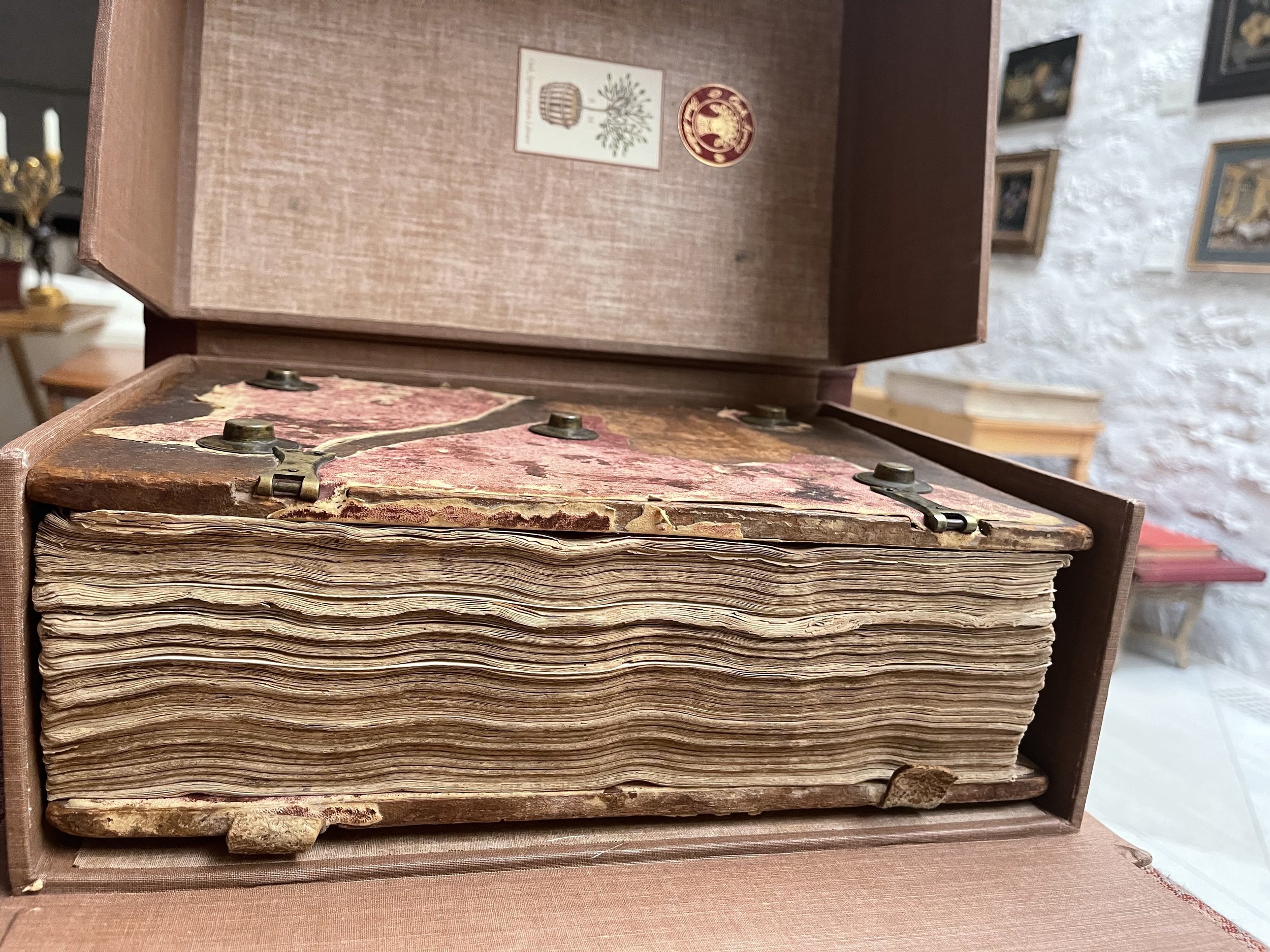
The Oak Spring Garden Library’s oldest manuscript is from 1350. Titled Buch der Natur, by Konrad von Megenberg, it is comprised of 332 leaves. For context, this manuscript was created a century before Gutenberg’s invention of the printing press. As can be noted from the photos, the book is still intact. Although protected in a box, its cover and binding are still fastened and working. The pages are white and thick, stained and damaged only by the acid, oils, and dirt left behind by its many handlers over the centuries. The paper was likely made of a cotton blend and upon close observation the pages do not seem cut down to shape, with the exception of a few that are trimmed to fit the binding. These leaves were made carefully, presumably took a long time to ensure the straight and sharp edges and manufactured by a very skilled paper maker. The margins are wide all the way around to prevent any damage to the text in the event it got wet, began to mold, or rodents nibbled at it. Luckily, there has not been substantial damage to this manuscript.
John Hasard Map (Berkshire, England, 1528-1529)


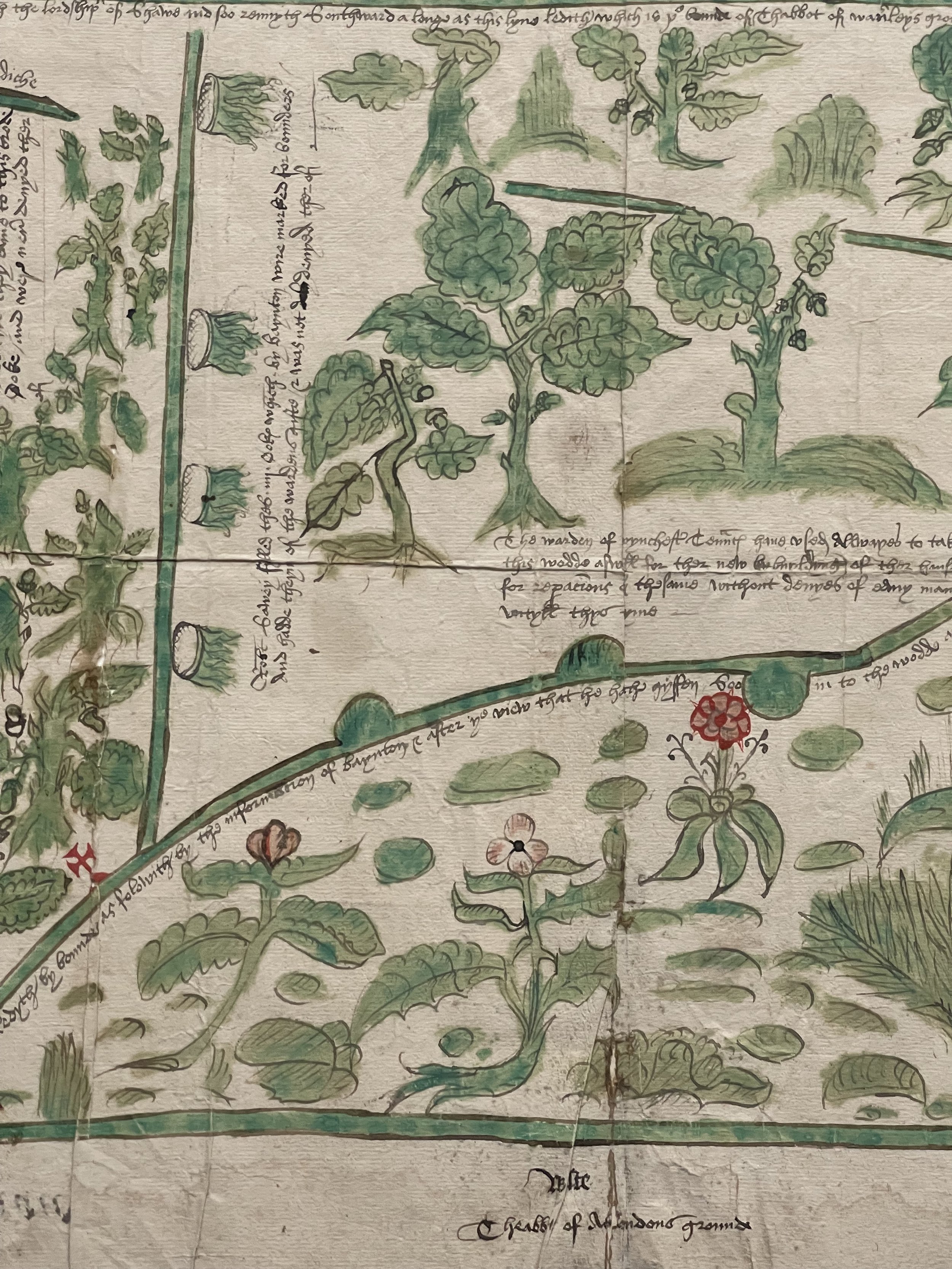

Along with the books in the library's collections can be found prints and maps. Created nearly 200 years later is the John Hasard map of the manor or lordship of Shaw from 1528-1529, from Berkshire, England. The map has a raw edge and incredible ribbed textures which show that this paper was likely dried in a different manner than the Konrad manuscript. As was taught in the paper making demonstration, papers that are air dried tend to keep the fiber's texture, while pieces pressed down either on a window or in the dry box, have more flat and smooth finishes. Suggesting that this piece was presumably airdryed or not heavily pressed. The folds and creases have marked the paper but not broken or torn it. The thicker quality and more prominent fibers of the material have allowed the paper to stay in one piece.
Herbario by Castore Durante (Rome, 1585)
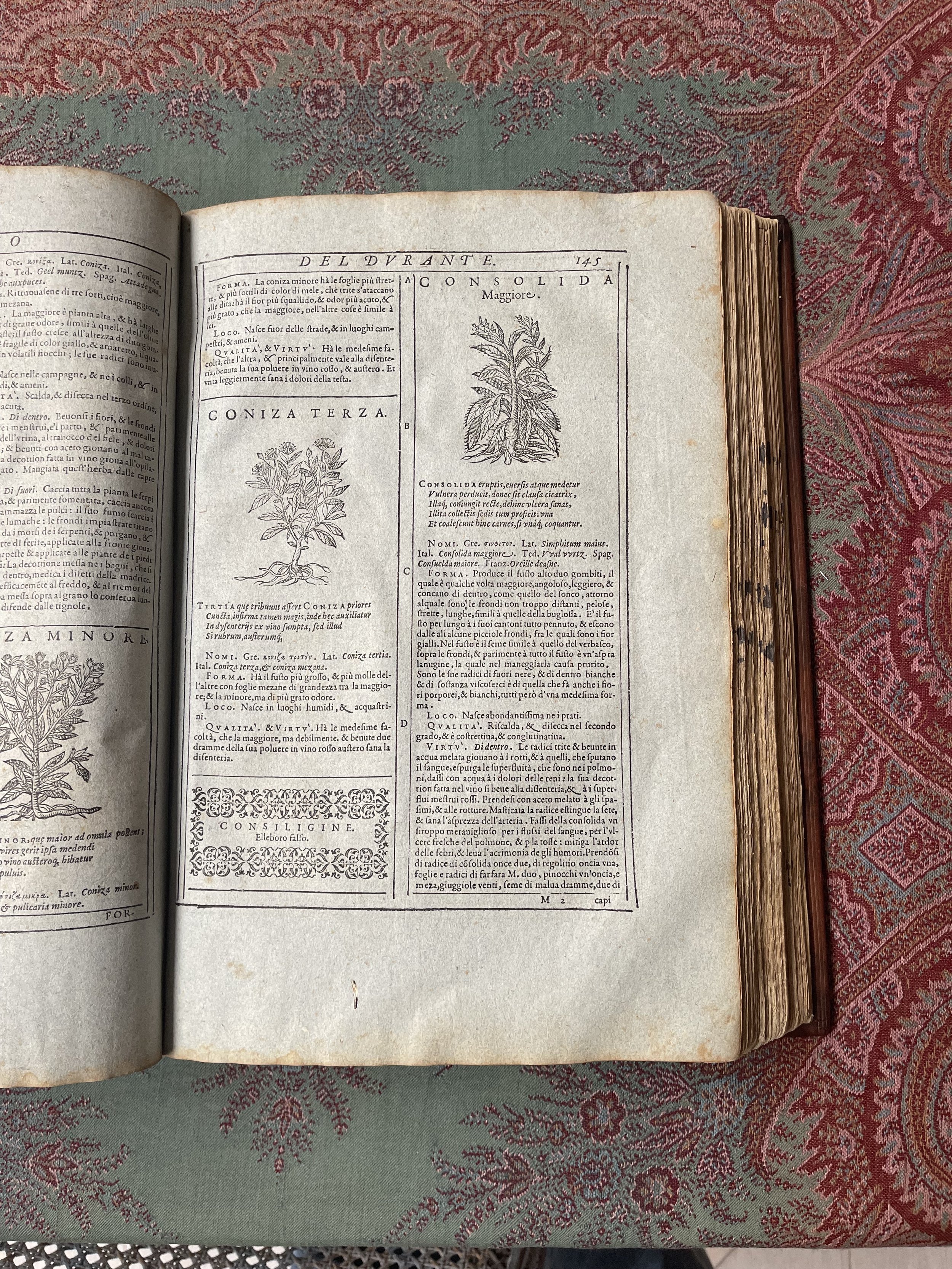
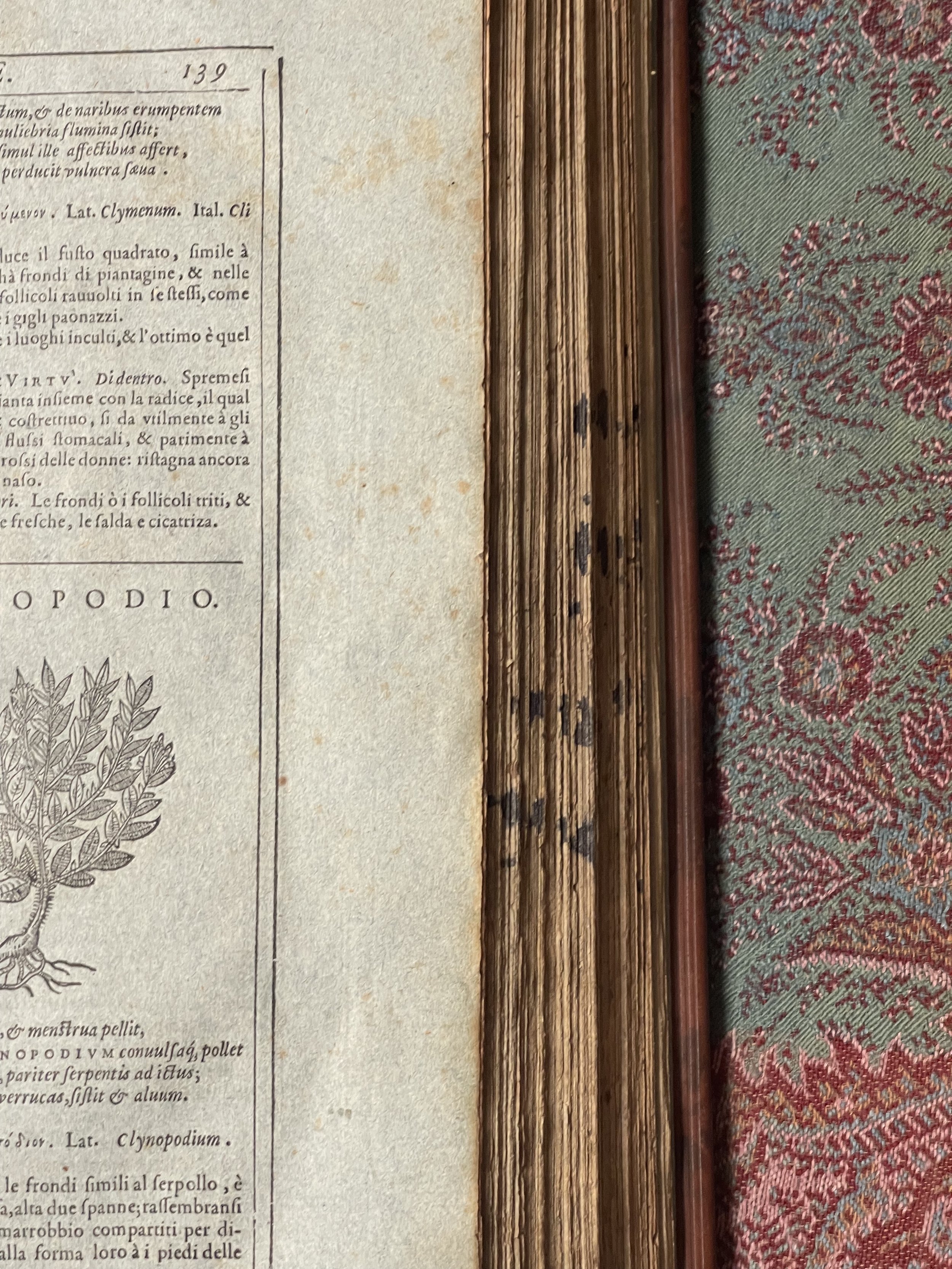
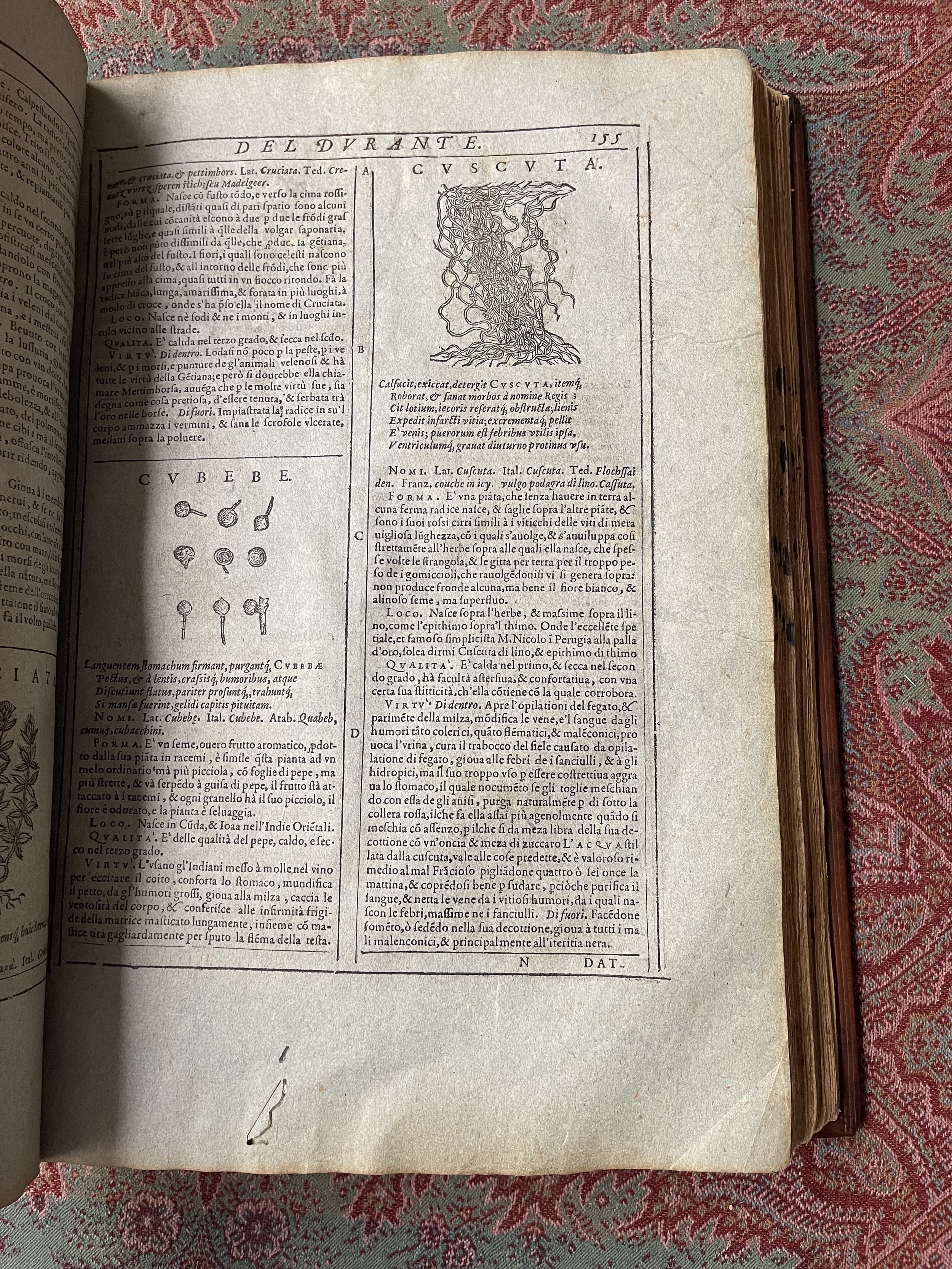
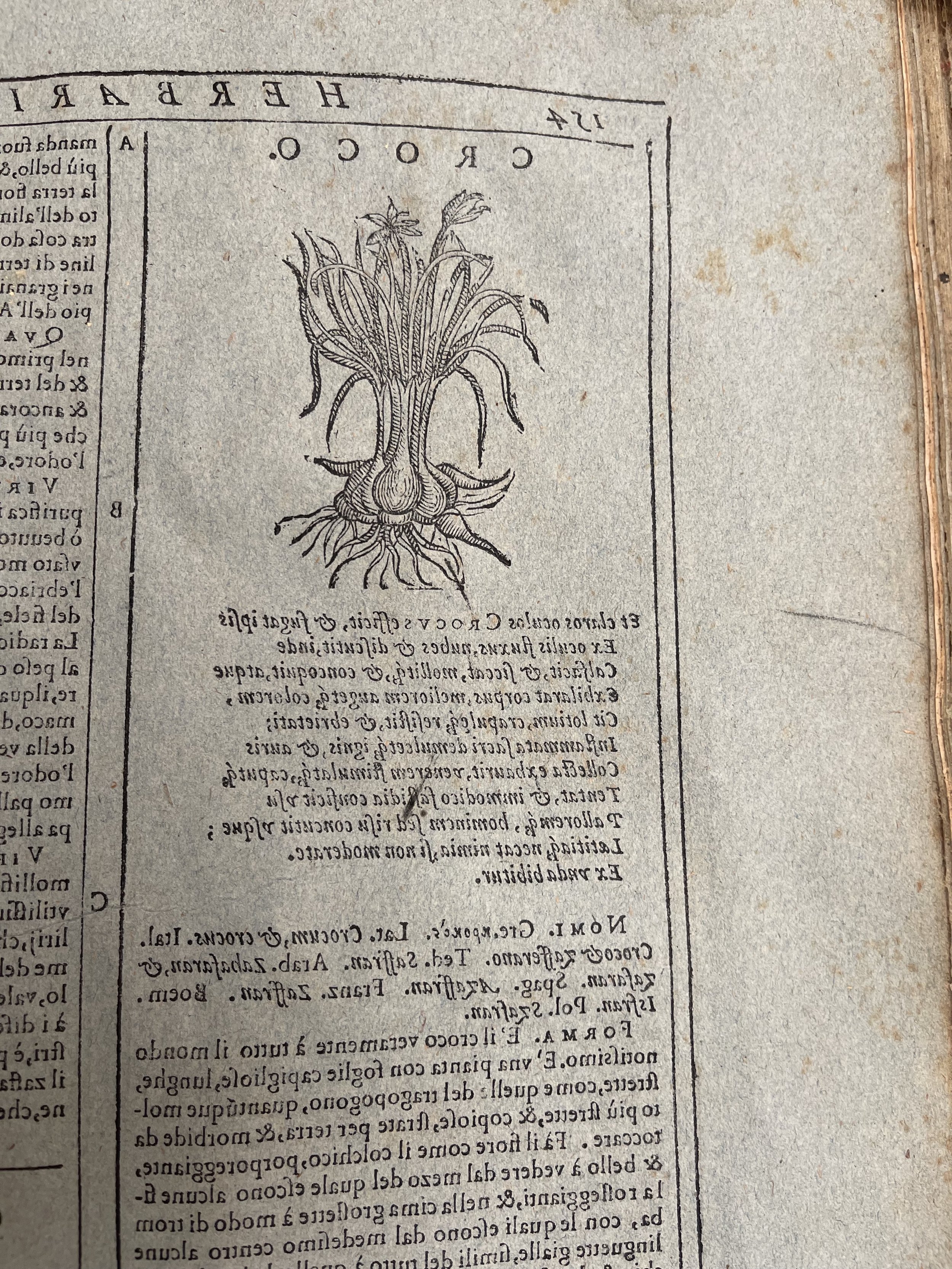
Created within the same century was the Castore Durante manuscript, Herbario. Printed on blue paper, with the exception of a few white leaves which were inserted at another time, Herbario was published in 1585 in Rome. Durante was a botanist and he had a wonderful understanding of plants which can be noted both by what he wrote and how he chose to have the book made. The blue paper is believed to be an aesthetic choice, especially considering the time and money it would have taken to produce blue paper. The indigo dye used for this manuscript was possibly made from woad, a plant that creates different colored dyes from different parts of the plant. Durante, presumably, knew well of the plant's many abilities and used it to make this copy of his manuscript unique and special. The pages, similar to Konrad’s manuscript, are thick and were likely not trimmed.
Histoire et Légendes Des Plantes Utiles et Curieuses by Jean Pierre Rambossons (1869)
As paper became more mainstream and easily manufactured, the sheets became more consistent in size and shape. Jean Pierre Rambossons book, Histoire et Légendes Des Plantes Utiles et Curieuses, from 1869 showcases a much more uniform book. The images within are from wood engravings and etched plates, a more common practice as literature and bookmaking was more common for the masses. The sheets, to a hands touch, are thinner and similar to modern day paper with hardly any fiber texture. The paper is perfectly straight on its edges with the damage appearing on top of the pages, from acids and oils. The cotton pages are holding up similar to those in Konrad von Megenberg’s manuscript, made nearly 500 years apart.
The Oak Spring Library is continuously working to share its collection, while also eager to learn more about the history behind their artifacts, especially when it can be related to or involve the farm! If you want to learn more about the special works in the library, be sure to follow our instagram for posts about specific works. You can also go to our instagram page to learn more about short courses, residencies and events taking place at the foundation.



